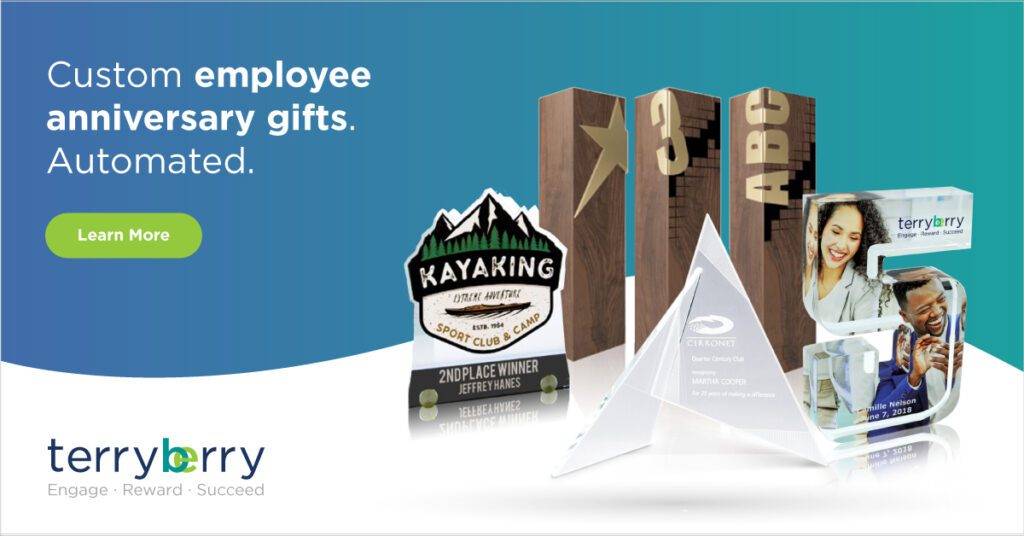June 17, 2024


With job hopping becoming the new normal, one way companies can help retain employees is through employee development programs.
In fact, research has found that 86% of employees would change jobs for more training options and 84% of employees expect their employer to provide training to keep up with industry skills.
Unfortunately, companies oftentimes miss the mark when it comes to strategic employee development. Whether it's programs that aren't in line with employees' strengths, out of sync with long-term business goals, or require employees to complete training on their own time - there are countless ways to fumble employee development initiatives.
Here, we'll explore what an employee development program is, why they're important, and how companies can incorporate effective employee development programs into their overall business strategy.
What is Employee Development Programs
An employee development strategy is all about giving employees the chance for career growth. It involves providing them with opportunities to learn new skills, improve existing ones through ongoing development, and gain knowledge relevant to their field. This can benefit both the employee and the employer.
There are many different ways to approach employee development. Some popular employee development areas include:
- Training programs: These can be formal programs offered by the company or informal programs that employees can take on their own.
- On-the-job training: This involves training employees to learn new skills by doing the job itself.
- Mentorship programs: These programs pair experienced employees with less experienced employees to provide guidance and support.
- Stretch assignments: These are temporary assignments that give employees the opportunity to learn new skills and take on new challenges.
- Conferences and classes: These can be a great way for employees to stay up-to-date on industry trends and learn from experts.
By investing in professional development, companies can create a more skilled, engaged, and loyal workforce leading to increased business growth.
Why is Employee Development Important?
Employee development opportunities are a win/win for both employer and employee for many reasons, from increased retention and productivity to boosted morale and employee engagement.
1. Boost Retention
It's estimated that about a third of people who left their jobs in 2021 did so due to a lack of career advancement opportunities. Remember, an advancement opportunity doesn't have to mean a promotion, per se. It can be in the form of personalized employee development plans that give employees a sense of satisfaction and fulfillment.
2. Increase Productivity
The natural outcome of career development efforts is employees who are better equipped to complete their job tasks. This can result in employees becoming more autonomous and efficient, ultimately driving an increase in productivity.
3. Better Company Culture
Investing in training and development opportunities shows employees that you care about their career's longevity. This mindset permeates throughout the organization, demonstrating important company values.
4. Attract Top Talent
Companies that invest in their employee development can gain a reputation for doing so. This sets these organizations a cut above the rest, making them desirable to top performers in the talent pool.
5. Increase Profits
Research from the MIT Sloan School of Management found that an employer’s year-long soft skills training program led to a roughly 250% return on investment within eight months. Furthermore, it's estimated that upskilling could boost global GDP by as much as $6.5 trillion by 2030, according to one 2021 report.
Additional research has found:
Employee Retention and Engagement:
- 94% of employees would stay longer at a company that offered learning and development opportunities [Source: LinkedIn Learning].
- Employees who feel like they are progressing in their careers are 20% more likely to stay with their company [Source: Zavvy].
- A lack of development opportunities is a major reason employees leave, with 74% saying it prevents them from reaching their full potential [Source: ClearCompany].
Improved Performance and Productivity:
- Companies with comprehensive training programs have 218% higher income per employee than those without [Source: Devlin Peck].
- 59% of employees say training directly improves their performance [Source: Devlin Peck].
- Investing in development led to a 24% productivity increase [Source: Culture Amp].
Attracting Top Talent:
- Development opportunities influence the workplace choice for nearly half of workers [Source: Teachfloor Blog].
- Strong development programs can be a magnet for top talent who value growth opportunities.


Types of Employee Development Programs
Most leaders understand the value of investing in employee training, but knowing which type of program is best can be more complicated.
Employee development programs come in all shapes and sizes, catering to different needs and learning styles. Here's a breakdown of some popular types:
Skills-Based Programs:
- Technical Skills Training: Focuses on specific job-related skills like software programs, machinery operation, or technical knowledge. Often delivered through classroom sessions, online courses, or on-the-job training.
- Soft Skills Training: Develops interpersonal skills like communication, problem-solving, teamwork, and leadership. This training can involve workshops, role-playing exercises, or coaching programs.
Career Development Programs:
- Mentorship Programs: Pairs experienced employees (mentors) with less experienced ones (mentees) for guidance, career advice, and support.
- Leadership Development Programs: Equips employees with the skills and knowledge needed to become effective leaders. May involve leadership training courses, coaching, and project assignments.
- Career Path Planning: Provides employees with guidance on potential career paths within the company and the skills and experience needed to advance.
Other Programs:
- Compliance Training: Ensures employees are aware of and adhere to company policies, legal regulations, and industry standards. Often mandatory and delivered through online modules or workshops.
- Tuition Reimbursement Programs: Financially assists employees in pursuing further education or certifications relevant to their field.
- Conference and Workshop Attendance: Provides opportunities for employees to learn from industry experts, network with peers, and stay up-to-date on current trends.
- Stretch Assignments: Assigns employees temporary projects outside their usual duties, allowing them to gain new skills and broaden their experience.
Additionally:
- Self-Directed Learning: Encourages employees to take initiative in their own development by providing resources like online learning platforms, industry publications, or professional development funds.
- Internal Knowledge Sharing: Leverages internal expertise by having experienced employees share their knowledge with others through workshops, brown bag lunches, or online forums.
Remember, an employee development plan should cater to your specific company needs and employee interests. Consider a combination of these approaches to create a well-rounded development strategy for your workforce.


How to Create Effective Employee Development Programs
Whether you're starting an employee development program from scratch or hoping to refine an existing program, there are some guidelines that will help ensure success.
1. Establish Long-Term Goals
Before creating any kind of employee development program, you'll need to assess where you want your organization to go in the future.
Assess your current workforce and company culture by noticing how your teams operate today. What are their strengths? Now, look towards your envisioned future. What skills and mindsets will be essential to get there? What obstacles might you encounter on the way?
An impactful development plan should hit three key targets:
- Employee Engagement: Align development opportunities with individual aspirations. This shows employees you value their growth, boosting engagement and keeping them motivated.
- Strategic Growth: Focus on your company's long-term goals. Identify key skills needed to achieve these objectives. Then, bridge any skill gaps through targeted development initiatives.
- Leadership Pipeline: As your company grows, leadership opportunities will emerge. Invest in leadership training to cultivate future managers who can guide your organization's continued success.
By considering both your company's vision and your employees' ambitions, you can create a development plan that fuels success for both.
2. Create Personalized Professional Development Opportunities
The next step in creating an employee development program is to have managers meet with their teams. Regular one-on-one meetings between managers and direct reports are crucial for crafting a robust employee development program that works for employers and employees.
These discussions should explore:
- Employee Motivations: What excites employees about their work? What tasks do they find challenging or unengaging?
- Career Aspirations: Where do employees see themselves growing within the company? What kinds of hard and soft skills do they need to have to get there?
While employees will need to take ownership of their development plan, managers still play a vital role as guides, supporters, and encouraging employees through any roadblocks. So, be sure to schedule regular check-ins to discuss progress on the development plan and brainstorm professional development opportunities together.
Remember, personalization is key! Tailoring opportunities to individual employee learning styles and interests is crucial for success. If the format or content isn't a good fit, the information may not be retained, and the development opportunity is lost.
3. Put Together Training Programs
After meeting with their teams, managers might start to see themes developing. For example, they may find that a number of employees want to develop their leadership skills or improve their public speaking abilities.
This is where training and development objectives can start to take shape. And being able to group employee training opportunities together can save time, money, and resources.
Some group training options include:
- Lunch and Learn with Internal Experts: Leverage your leadership team's network! Perhaps a talented colleague with strong public speaking skills would be willing to share their expertise during a brown-bag lunch session.
- Training Seminars: Have a group of employees attend a training conference that covers a range of topics. This can be anything from sales training to digital marketing to HR summits.
- Professional Development Stipends: Offer financial support to employees who pursue individual development goals. This empowers them to choose courses, workshops, or certifications that align with their specific aspirations.


4. Gather Feedback and Adjust
The true value of employee development often unfolds over time. While sales training might not lead to a surge in closed deals overnight, it can significantly boost close rates and employee retention in the long run.
To ensure your employee training programs are generating the results you intended, be sure to gather feedback and monitor progress over time.
Gauge the success of your programs by:
- Employee Engagement: Development opportunities are a key driver of employee engagement. Conduct regular surveys to measure employee interest and satisfaction with these offerings.
- Manager Feedback: Regular check-ins between managers and their teams are crucial. These discussions should explore if additional training is needed, how employees are applying new skills, and what learning methods resonate best.
- Adapting and Evolving: Based on manager feedback and employee engagement surveys, adjust individual development plans and communicate broader trends to leadership. This allows continuous improvement of the company-wide development strategy.
Remember, the impact of development may not be immediate, but a well-designed program cultivates a skilled, engaged, and future-proof workforce, ultimately driving long-term success.
Invest in Your Employees with Terryberry
Investing in your employees is a long-term commitment that takes many forms. In addition to employee development programs, building employee engagement at your company requires a well-rounded approach. And we're here to help.
Terryberry's comprehensive suite of solutions — like surveys, recognition tools, and feedback systems — supports your employee development at every turn.
- Surveys: Use real-time insights to set targeted SMART goals that address the real needs of your team.
- Recognition: Celebrate your teams and leaders with meaningful feedback and social recognition.
- Rewards: Provide customizable rewards to recognize and appreciate your teams and leaders' efforts.
Explore Terryberry's solutions and take the first step toward boosting employee engagement at your company.


